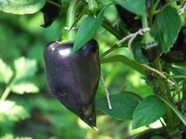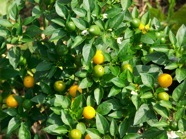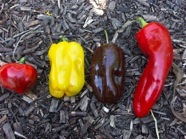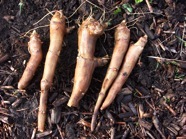
Pa-Pe
PALELEAF WOODLAND SUNFLOWER
A very close reative of the more-known Jerusalem Artichokes, paleleaf woodland sunflower (helianthus strumosus) produce long and straight tubers, without the knobs and other irregularities most Jerusalem artichokes varieties have.Just put a tuber in the ground and you will be rewarded with a few kilos of nice-tasting fresh tubers, who are completely winterhard. Taste and growth are comparable to Jerusalem artichokes.
PAPALO
Bolivian herb with a coriander like taste. It is very happy in a sunny spot, thrives pretty good under rainy circumstances (except in 2008, things were too wet then), but does prefer a nice dry summer. Use the leaves fresh or add them to warm sauces after cooking, or they will loose their flavour. Seeds prefer a very hot place for germinating, otherwise the plants grow without problems. Flowering is very late , so it’s difficult to get some good papalo (porophyllum ruderale subsp. macrocephalum) seeds over here, but it should work in a greenhouse.
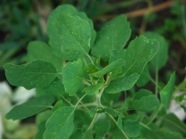
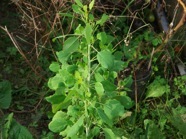
PARSLEY
The most common type over here is the curled type, however I like the flat-leaf type so much more, the taste is stronger, better and the plants are more productive. This form of parsley has the disadvantage of not being as good-looking as the curled type.
Seed germination is easy, but most people have problems with it: first of all, make sure you use fresh seeds, second, sow in a moist ground, and keep it moist (an old trick is covering the seeds with a bag made from jute, and this is removed once the seedlings are seen). Sometimes the carrot fly lays his eggs right next to parsey roots as well, the larvae penetate the roots and can destroy young plants, first signs are the reddening of the leaves.
Root parsley or hamburg parsley (also Petroselinum crispum) is a very good alternative for parsnip or carrots, this forms long whitish very good-tasting roots, unfortunately mice also love them, I never ever could harvest a decent root of these....
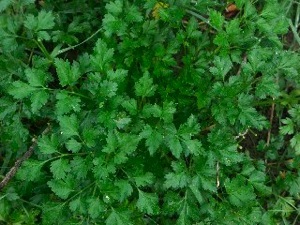
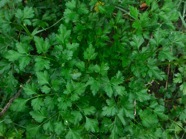

PARSNIP
One of the really old vegetables, parsnip (pastinaca sativa) has a very good delicate taste, and can give huge crops, roots over 1 kgs aren’t exceptional. Parsnip grows just about everywhere, they’re happy with some water in dry periods, and use a piece of ground that has been fertilised the year before, results will be better. And use fresh seeds, old seeds don’t germinate!
Parsnip can be used everywhere where carrots can be used, hot disches, boiling,...
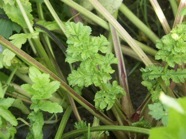
PEA
Who doesnt’t long for the first peas in late spring? Especially the edible pod varieties are a wonderful sign of warmer weather that is coming. Peas are so wonderful to grow, some varieties are even that hardy that they can be sown during autumn, and planted out at the beginning of the winter, only needing a bit of protection during very cold periods. Other varieties however are sown in late winter, and grow rapidly to the flowering stage. Most peas( pisum sativum) are grown for the peas, off course, and these can be used for soups, boiling, and so on. Some varieties have edible shoots as well, like dwarf grey sugar or parsley pea.

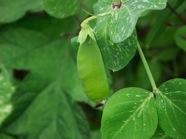
PEANUT
Peanuts (Arachis hypogaea) are eaten in the whole world, but they can’t grow everywhere. They prefer hot and dry conditions, which I can only give in the greenhouse. They flower quite early, even when plants are small. Pollinated flowers bend down and form the nuts under the soil surface. Mostly peanuts are sold roasted over here, so you can’t germinate these. Some seed firms do have unroasted peanuts.
Again there are lots of varieties, one of the best for northern latitiudes is Valencia, but even that one is hard to grow...
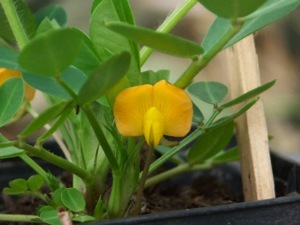
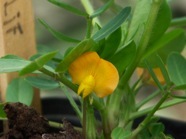
PEPINO
Pepinos thrive well over here, the plants (and fruits) want a long growing season. I grow them in pots and place these in the greenhouse when cold frosty nights arrive in autumn(they are frost-tender). Pepinos (Solanum muricatum) prefer mild temperatures, and will not set fruit if it’s too hot, so best place them outside, even in a semi-shaded position during summertime. They can be grown from seeds, but, as is the case with most Andean plants, they are very easily propagated by cuttings. Taste improves when the fruits are left on the plants, even when they already apear to be ripe. They taste like a cross between pears and melons, the fruits keep for a long time. And yes, again...lots of varieties....
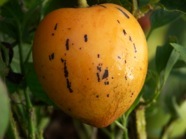
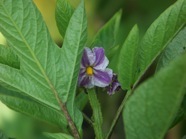
Peppers (capsicum annuum) were pretty unknown over here up to the 1940’s or later. I have old books mentioning either one or two hot varieties, or even without refering to peppers! And if we look now, shops have sweet peppers from January to December.
And they are so much fun to grow, provided they get lots of heat. I think the taste of the homegrown thin-walled varieties is superior to the thick-walled peppers sold everywhere. Start the seeds early, give them lots of warmth to germinate , plant the seedlings in small pots (all frost-free, off course) and give them a sunny spot in full ground (for early varieties like healthy , demre or others) or a place in the greenhouse. Most varieties turn from green to red , some from black to red, some will turn yellow, and so on...
Some varieties are long-living, if kept frost-free. This is especially the case with capsicum baccatum, capsicum chinense, capsicum pubescens , capsicum frutescens,.. varieties. Most of these varieties are quite sharp tasting, a good mild -tasting variety of capsicum baccatum is dedo de moca.

PEPPER
